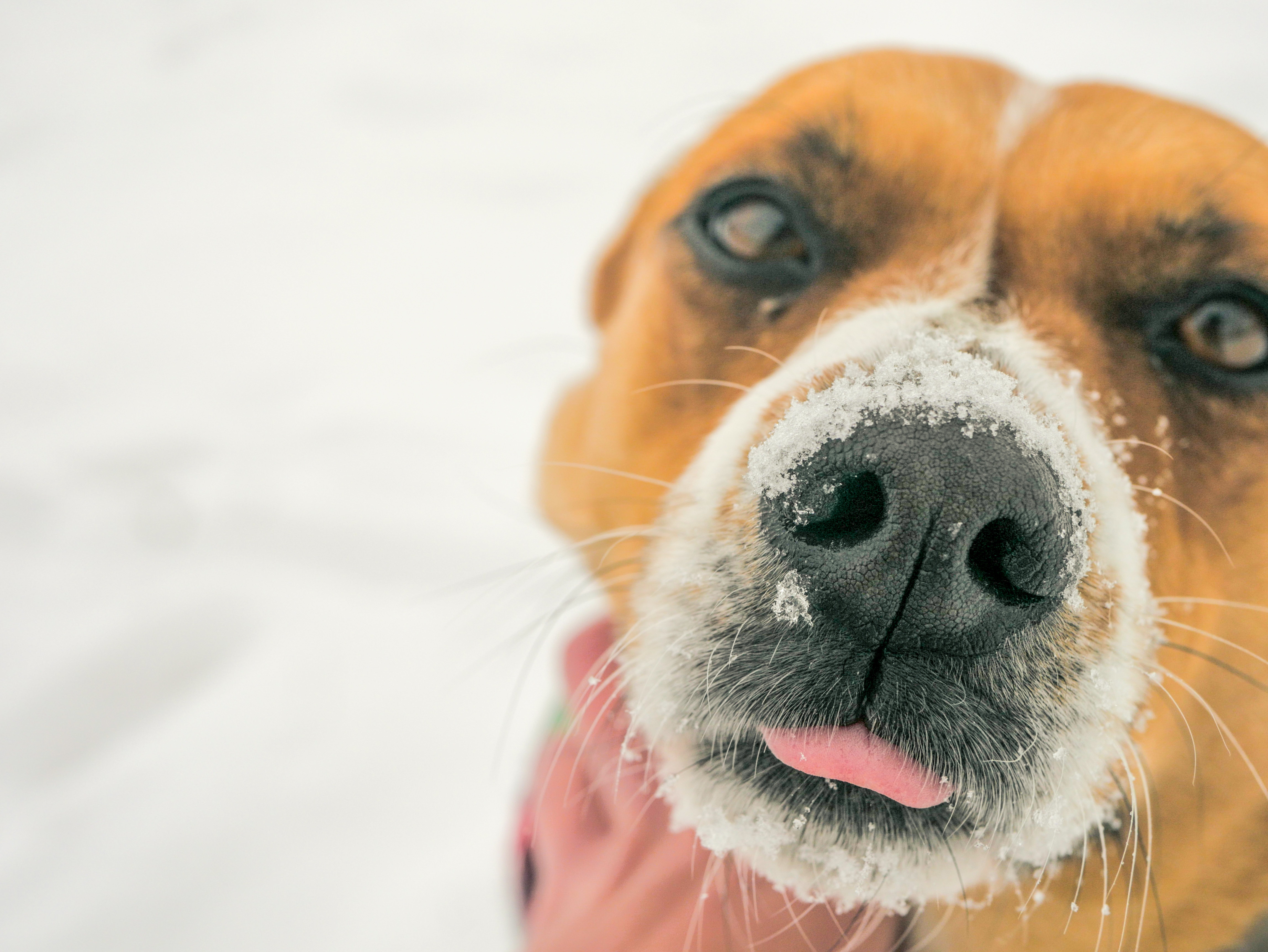Dogs are hearty animals that usually love to be outdoors, and if you go camping with one, you know how much they really do love to be outside. Just as you need to take precautions when the weather is warm, you need to take care to protect your dog when cold weather strikes, too. Here are some common “myths” – busted!
Dog pads retract all chemicals, such as antifreeze or ice melt.
Pads are incredible, but they aren’t bulletproof. Chemicals from frequently used winter treatments can make their way into your dog’s body through the feet, as well as other areas of skin. Wipe down your dog’s paws after each trek outside, as well as the belly. This helps avoid absorption as well as accidental ingestion (i.e., licking paws). If you are spreading ice melt, around the RV for instance, choose one that is pet-friendly. Of course, you can always decide to get special booties for your dog to wear to protect his feet not just from chemicals, but from harsh ice and hidden objects that may be under the snow.
Dogs need a little weight to stay warm.
Your dog has an optimal weight. Just because you’re craving beef stews doesn’t mean your dog needs extra calories or fat in his diet. Too much weight will add strain to your dog’s joints and heart, and then the dreaded fact that he may not be able to keep up as well on the trail come the warm days of summer. Your dog may need less food, not more, depending on its activity level during the winter months. If you are both still active when it’s cold, then maintain your dog’s diet or ask your veterinarian about whether the quantity should be increased based on the activities you’re doing (i.e., snowshoeing).
Dogs don’t get dehydrated when it’s cold outside.
Things get dry in the winter because of the reduction in moisture and humidity. This can make it seem like your dog doesn’t need as much to drink, but really they need as much or more. If you’re outdoors doing something, make sure you give your dog a drink every time you stop for one. You may not feel like drinking much when it’s cold, but it’s essential to keep your body temperature consistent and your muscles hydrated. It’s the same for your dog.
Dog pads protect them from all elements of winter weather.
Dog pads are still susceptible to cuts and frostbite. Try to avoid ice when possible. After your dog has been outside, check his paws for snowballs and remove them. Also examine for cracks or bleeding as well as for broken nails. Musher’s Secret Pet Paw Protection Wax or petroleum jelly can help protect and heal your dog’s paws if they form cracks or sensitive spots.
Dogs are safer in the car in the winter than in the summer.
Both have their hazards. Vehicles can still get colder than the outside temperature if left parked for long or left in an exposed area. Also, dogs with any chronic health issues such as diabetes, heart or kidney disease, or hormonal imbalances have a more difficult time regulating their body temperature. Add moisture from breathing and now you’ve got a damp, cold environment. We all know how it feels to be cold “to our bones.” Your dog has fur, but he is still vulnerable to the cold.
Make sure your dog has a place to find refuge from the elements if he must be outdoors for a time, but of course, not when the temperature and wind chill is too low. You love your dog, so make sure he’s well protected and taken care of, every season of the year.

